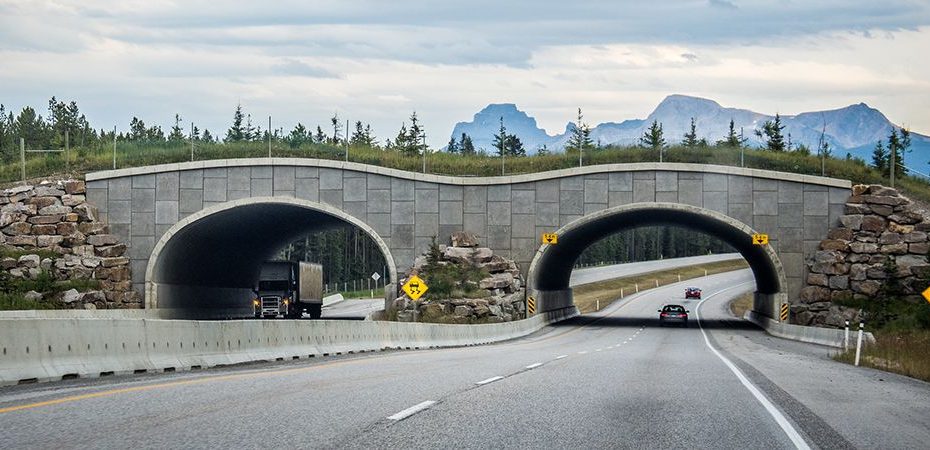Humans have built crosswalks and traffic lights to help us move safely through our world. But what happens when a moose needs to cross a four-lane highway where cars zoom by every few seconds?
In the Algonquin to Adirondacks corridor, an ecologically rich region vital for wildlife movement, more than 20,000 animals are killed on Ontario’s roads each year. Species like moose and turtles have an average of just five seconds to make it across North America’s busiest highway— Highway 401. An impossible challenge, with devastating consequences for both wildlife and people.
Fortunately, safe wildlife crossings, like those found in Banff National Park, can mitigate this danger to animals and drivers and help reconnect a fragmented landscape.
Barriers to Connectivity
Across Ontario, the same network of roads that connects our communities has also become a barrier for wildlife — fragmenting natural landscapes and threatening biodiversity. Highways like the 401 slice through critical habitats, leaving forested and wetland areas isolated and wildlife unable to safely move across the landscape to find food, mates, or new territory.
As wildlife populations become confined and lose their ability to adapt, they may quietly disappear from the landscapes they once called home.
The risk of wildlife-vehicle collisions (WVC) increases as fragmentation becomes worse. In Ontario alone, an estimated 14,000 WVC occur each year — endangering both animals and people.
Ecological connectivity — the ability of animals and plants to move freely across the landscape to find resources — is essential for healthy, resilient ecosystems. Protecting and restoring that connectivity is key to ensuring that both wildlife and people can thrive in a rapidly changing world.
Wildlife Crossings: Reconnecting the Landscape
Wildlife crossings, overpasses and underpasses that provide safe passage to animals across busy roads, have been proven to help animals of all sizes. Whether it’s a bear or a frog, these crossings, when thoughtfully designed and built in the right places, help restore habitat connectivity, significantly reduce collisions, and protect countless animals and drivers each year.
In places like Banff National Park, a network of 44 wildlife crossing structures and 88 km of highway fencing over the Trans-Canada Highway has reduced WVCs by more than 80% overall — and by 96% for elk and deer alone. Now, similar efforts are gaining traction in Ontario to help restore a critical landscape and wildlife corridor in the Frontenac Arch.
Hope in the Frontenac Arch
The Frontenac Arch is an ancient granite bridge that connects the Canadian shield to the Adirondack Mountains in the U.S., creating a crucial migratory pathway for wildlife, many of whom are globally rare or at-risk. As one of the last remaining intact and forest wetland linkages in Northeastern North America, its protection is paramount to ensuring ecological integrity. But highways like the 401cut directly through this natural corridor, making safe wildlife crossings essential to ensure that wildlife have the space they need to move.
The Algonquin to Adirondacks (A2A) Collaborative plays a key role in researching and advocating for safe wildlife crossings throughout the region. As the Ministry of Transportation conducts planning studies to evaluate the future eight-lane footprint of the Highway 401 corridor, A2A is ensuring that connectivity remains part of the conversation.
Through its Frontenac Arch Safe Passage Campaign, A2A is working alongside its partners, the Ministry, and local communities to push for the construction of 3 wildlife overpasses that will give species like fishers, moose and bears safe passage across Highway 401.
Get Involved
Want to help make a difference? Visit their website to learn more about the ongoing planning studies and find out how you can submit a comment to let the MTO know you support safe wildlife crossings in the Frontenac Arch.
Resources
The post Reconnecting the Frontenac Arch: How Wildlife Crossings Can Heal a Fragmented Landscape appeared first on Ontario Nature.
